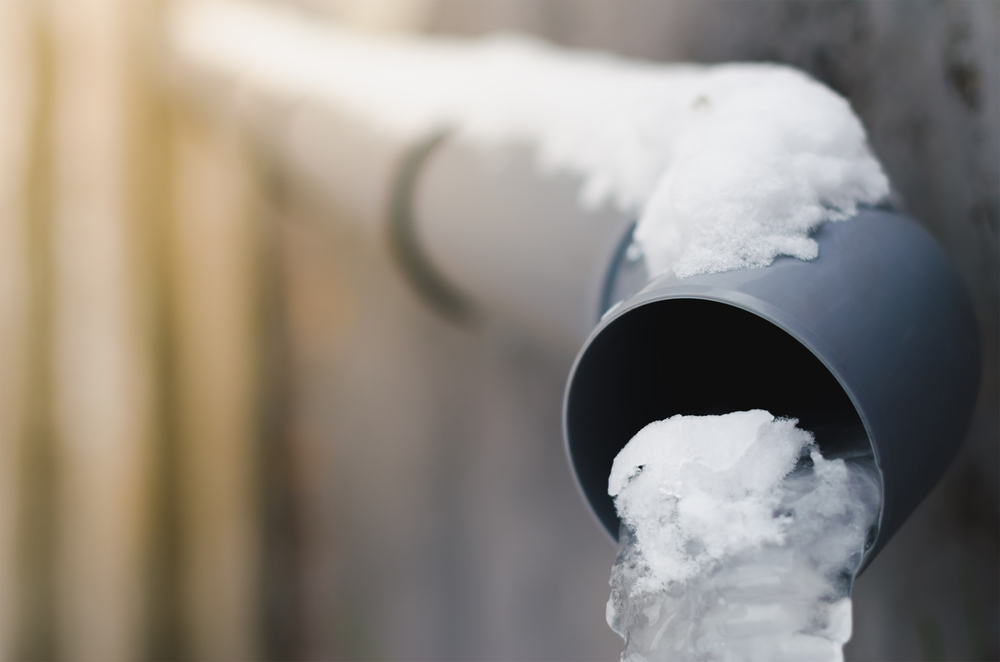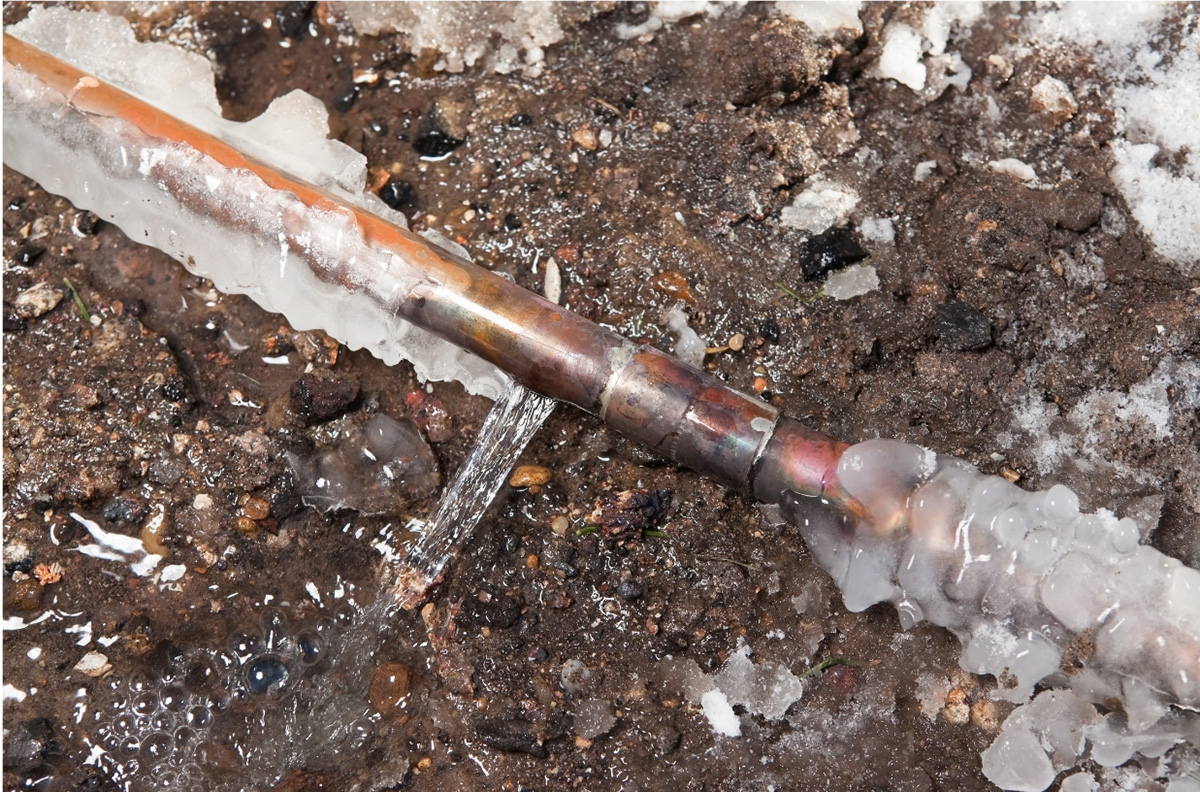Protecting Against Frozen Pipes in Winter: Key Strategies
Protecting Against Frozen Pipes in Winter: Key Strategies
Blog Article
What are your opinions on Prevent Frozen Pipes ?

Winter can wreak havoc on your plumbing, especially by freezing pipelines. Right here's exactly how to avoid it from occurring and what to do if it does.
Intro
As temperatures drop, the risk of frozen pipelines boosts, potentially bring about pricey repairs and water damages. Understanding exactly how to stop icy pipes is important for homeowners in cold environments.
Comprehending Frozen Pipes
What causes pipelines to freeze?
Pipes ice up when revealed to temperature levels listed below 32 ° F (0 ° C) for prolonged durations. As water inside the pipes ices up, it expands, taxing the pipe wall surfaces and possibly causing them to rupture.
Threats and damages
Icy pipelines can lead to water disruptions, property damage, and pricey repairs. Burst pipes can flood homes and cause extensive structural damage.
Signs of Frozen Pipeline
Determining frozen pipelines early can stop them from breaking.
Just how to recognize frozen pipes
Seek lowered water flow from faucets, uncommon odors or sounds from pipelines, and visible frost on exposed pipelines.
Prevention Tips
Shielding susceptible pipelines
Wrap pipelines in insulation sleeves or utilize warmth tape to safeguard them from freezing temperature levels. Focus on pipelines in unheated or exterior areas of the home.
Home heating techniques
Keep indoor spaces sufficiently warmed, especially locations with pipes. Open up closet doors to enable cozy air to circulate around pipes under sinks.
Protecting Outside Pipes
Yard hoses and outdoor faucets
Separate and drain yard tubes prior to winter months. Mount frost-proof faucets or cover exterior taps with shielded caps.
What to Do If Your Pipes Freeze
Immediate actions to take
If you suspect icy pipelines, maintain taps open up to eliminate pressure as the ice thaws. Use a hairdryer or towels soaked in hot water to thaw pipelines gradually.
Long-Term Solutions
Structural changes
Take into consideration rerouting pipes far from exterior walls or unheated areas. Add added insulation to attics, cellars, and crawl spaces.
Updating insulation
Purchase top quality insulation for pipelines, attic rooms, and walls. Proper insulation helps preserve constant temperatures and reduces the threat of icy pipelines.
Final thought
Avoiding icy pipes needs positive procedures and fast responses. By understanding the causes, signs, and safety nets, home owners can protect their pipes throughout cold weather.
Simple Ways How to Prevent Frozen Pipes in the Winter
As winter has arrived, we all need to give our homes some love and attention so that they get us through the winter months. Unfortunately, the pipes in your home may suffer during winter as the water inside them freezes, causing an abundance of plumbing issues. How can you prevent frozen pipes as the weather gets colder?
If you aren’t sure how to take care of your pipes during winter, don’t worry. Here are a few tips to help you prevent your pipes from freezing.
What Are the Dangers of Frozen Pipes?
As water freezes, it expands dramatically. This sudden expansion of ice can cause them to burst, leading to serious water damage throughout your home.
This broken pipe can also freeze back over, causing the hole to extend over time. If you have any reason to suspect a pipe in your home has burst, you should hire assistance immediately to find and fix the burst.
Fortunately, you should only have to worry about burst pipes if the temperature drops below freezing temperatures. However, you should still use caution during the winter months if you live in a colder climate. If you don’t take proper precautions and temperatures drop suddenly during the night, you could be in for an unpleasant surprise in the morning.
How to Prevent Frozen Pipes
Now that you know the dangers of your pipes freezing during the winter, it’s time to learn how to prevent frozen pipes. Here are some tips to keep your home safe this winter.
Have Fans Blow Heat Into Cold Rooms
If you have rooms or spaces in your home that don’t have heaters, then you will want to find a way to supply them with heat. You can use fans to blow warm air from rooms with heaters into the colder rooms or purchase small heaters to place inside of the rooms. This tip is especially useful if you know that a particular room without heating has pipes running through it.
Let Your Faucets Drip
Letting water flow through your faucets, even if it’s a very light stream, will help keep the water from freezing in the pipes. Warm or hot water is best for this, as it will keep the pipes warm on the inside.
This can also help if the pipe has started freezing. Applying heat to the outside of the pipe while supplying warm water to the inside of the pipe will help melt or dislodge the ice built up on the inside. If this is the case, make sure the water is running very lightly; adding too much heat to the pipe at once can cause the metal to expand and potentially burst.
Use Extra Insulation
Using extra insulation in your basement and attic is a great way to prevent the pipes in those locations from freezing. The insulation will help to keep in heat and provide warmth to the pipes.
Even if your attic or basement already has insulation, you may want to consider applying some extra insulation around problem areas for the winter months. Place the insulation between the exterior wall and the pipe. This will keep the cold from getting to your pipe and causing it to freeze. This includes areas where there are several pipes or areas where a few pipes are at high risk of freezing.
You can add foam rubber or fiberglass sleeves around any exposed pipes to help them stay warm. However, you will still want to check on the pipes in these rooms regularly for anything abnormal.
Keep Cabinet Doors Open
Many homes have pipes inside of cabinets and cupboards. If you are worried that these areas are not getting enough heat, then keeping the cupboard doors open can help them stay warm. If the temperature in or around your home drops suddenly, then opening these doors is a great way to temporarily help your pipes.
What to Do If Your Pipes Freeze
If you discover a frozen pipe, then there are a few ways that you can try to get it under control. The first thing you’ll want to do is cut off the water to that pipe or the entire house if you are unable to control the specific pipe; this is because the ice inside may be acting as a blockage inside of the pipe, holding in water that will spray out once the ice has thawed. Get a bucket and mop ready for the thawing process- you may have some cleanup work to do!
Gently warming the outside of the pipe with space heaters or any other warm substance can help the ice inside thaw. If the pipe ends up bursting, or if you discover other issues with your pipe, you should call a professional for help.
Ensure you clear out any valuables or electronics that you don’t want to be damaged as you thaw out the pipe. You are likely to experience some leakage as you remove the ice inside of the pipe, so preparing the room is a must before you begin. If you aren’t confident with your abilities or aren’t sure what to do, you can always contact a plumber for assistance.
What to Do If a Pipe Bursts
Unfortunately, you may not be able to prevent a frozen pipe from bursting. If you are unlucky enough to have a pipe burst in your home, there are some steps you’ll need to take so that you can mitigate damages.
Start by immediately shutting off the water in your home. The longer the water stays on, the more water can leak out of your pipe and into your home.
Next, call your local plumber- they will be able to replace any damaged parts and get the leak under control. While you wait for the plumber to arrive, you can get to work on drying off the area; you can use mops, towels, sponges, or wet/dry vacuums to try and get rid of the water. Once you’ve gotten rid of what you can, putting a dehumidifier in the room can help the area stay dry.
If you have any belongings in the room, you may want to remove them for the time being to avoid them becoming damaged. Any electronics in the room should be immediately unplugged and removed as a safety precaution.
https://happyhiller.com/blog/simple-ways-how-to-prevent-frozen-pipes-in-the-winter/

Hopefully you enjoyed our post on How To Avoid Freezing Pipes. Thanks so much for finding the time to read through our short article. Enjoyed our content? Please quickly share it. Let someone else find it. Kudos for being here. Come back soon.
Make An Appointment Report this page